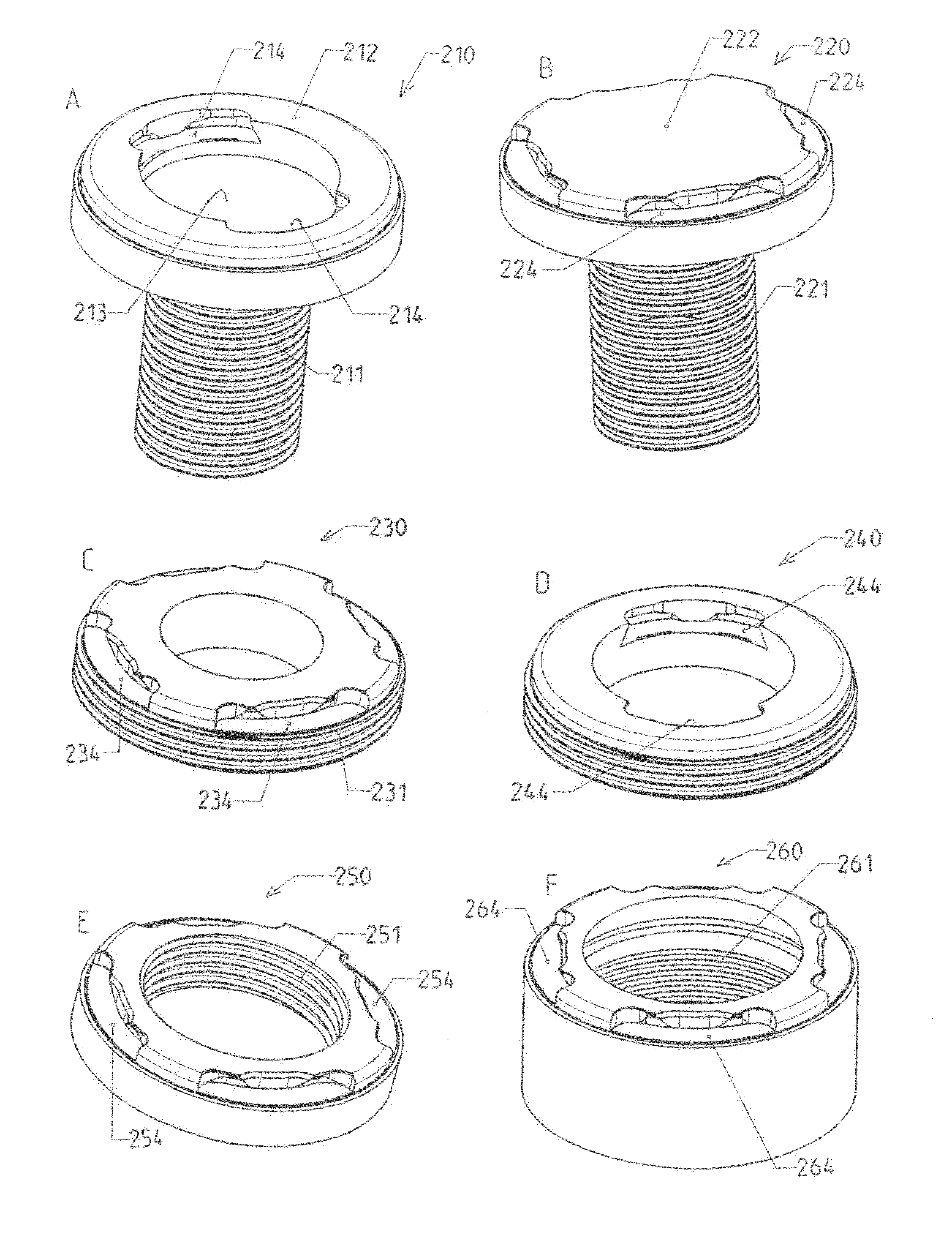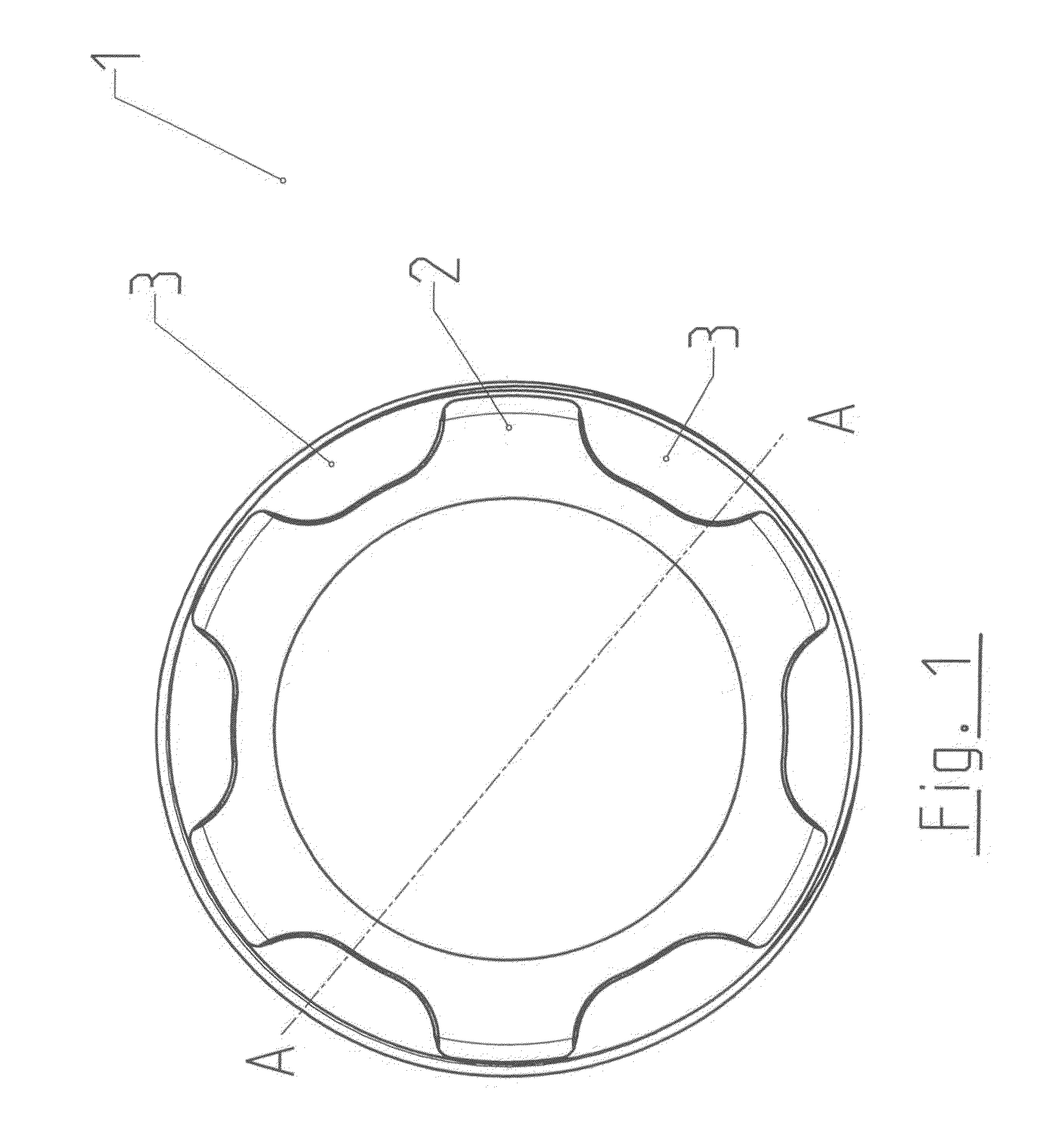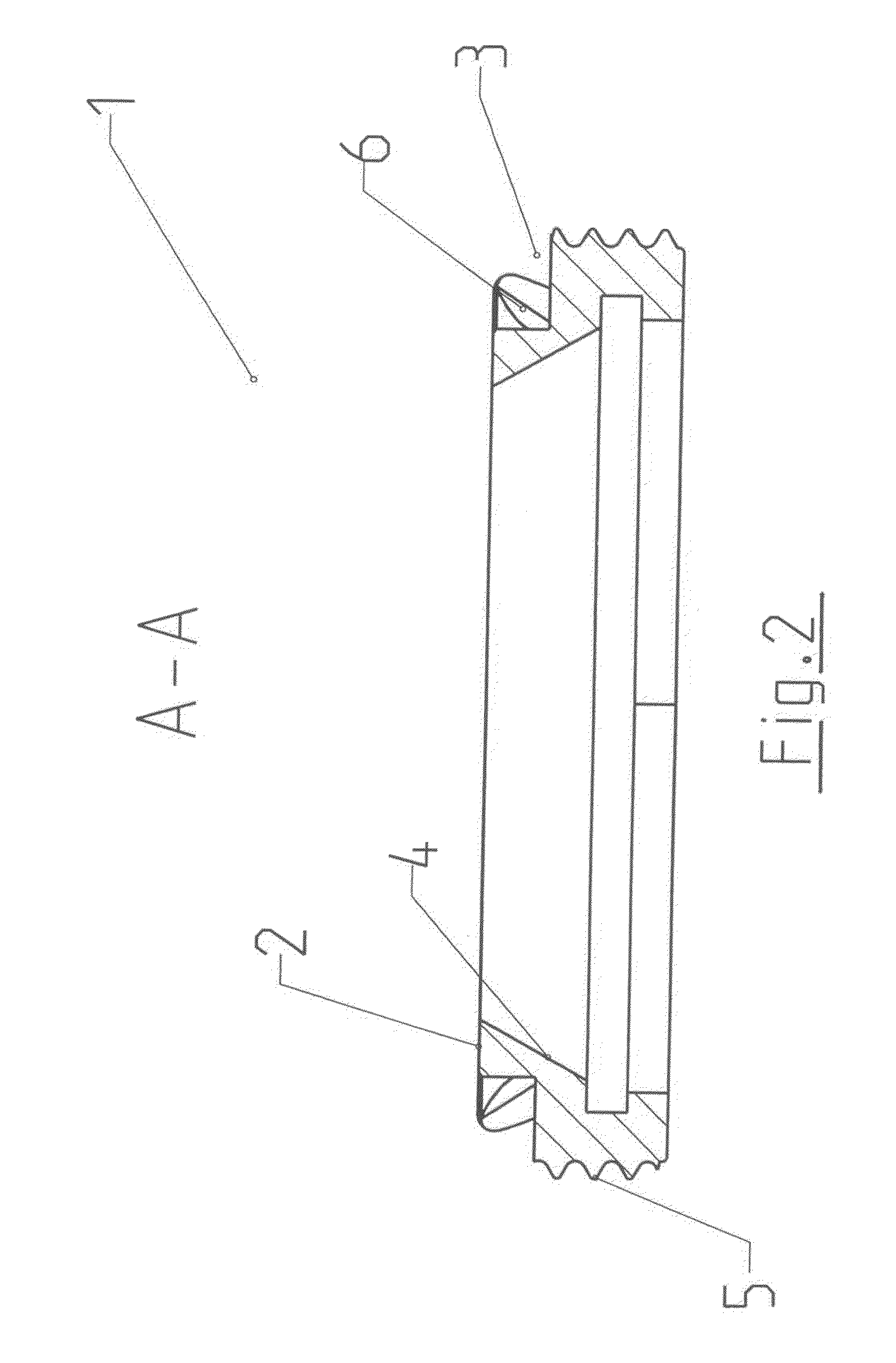Mechanical clamping element and clamping system
a technology of mechanical clamping and clamping elements, which is applied in the direction of screwing, threaded fasteners, manufacturing tools, etc., can solve the problems of locking the nut, difficult to prevent the nut from sliding laterally off the wrench under all conditions, and complicated and cumbersome, so as to achieve the effect of minimal force expenditur
- Summary
- Abstract
- Description
- Claims
- Application Information
AI Technical Summary
Benefits of technology
Problems solved by technology
Method used
Image
Examples
Embodiment Construction
[0040]The top view of an inventive clamping nut 1 in FIG. 1 shows the end Face 2 of the clamping nut with six recesses 3. The recesses 3 are arranged on the outside edge, and the end face 2 is closed on the inside edge. The cross-sectional view along line A-A, shown in FIG. 2, shows an internal cone 4 for the centered gripping of a collet chuck, for example, and an outside thread 5, for example, so that the nut can be screwed into the holder of a machine tool spindle or into a tool holder. The undercut 6 in the profile of the recess 3 can be seen in the cross-sectional view. The end face 2 of the clamping nut 1, which is closed on the inside edge, guarantees the stability of the clamping nut 1, wherein the undercuts 6 in the recesses 3 make it possible for the wrench to engage the nut in a slip-free manner. In addition, the closed inside-edge of the end face 2 prevents the clamping nut from slipping laterally out of the wrench.
[0041]FIG. 3 shows an isometric view of the inventive cl...
PUM
| Property | Measurement | Unit |
|---|---|---|
| shape | aaaaa | aaaaa |
| size | aaaaa | aaaaa |
| area | aaaaa | aaaaa |
Abstract
Description
Claims
Application Information
 Login to View More
Login to View More - R&D
- Intellectual Property
- Life Sciences
- Materials
- Tech Scout
- Unparalleled Data Quality
- Higher Quality Content
- 60% Fewer Hallucinations
Browse by: Latest US Patents, China's latest patents, Technical Efficacy Thesaurus, Application Domain, Technology Topic, Popular Technical Reports.
© 2025 PatSnap. All rights reserved.Legal|Privacy policy|Modern Slavery Act Transparency Statement|Sitemap|About US| Contact US: help@patsnap.com



